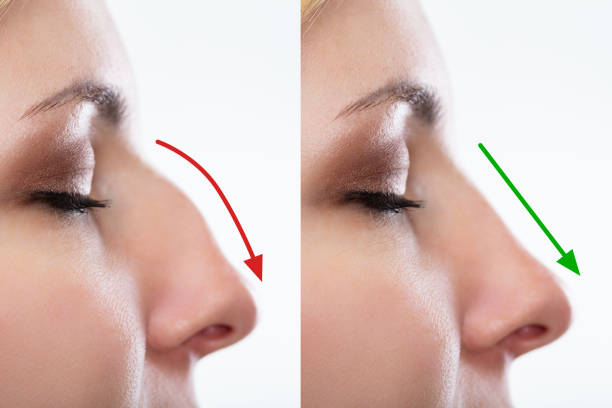Rhinoplasty surgery in Dubai (جراحة تجميل الأنف في دبي) is a popular cosmetic procedure aimed at enhancing the appearance of the nose. While it can lead to transformative results, it's essential to understand the associated risks and complications. Let's delve into the potential risks individuals should be aware of before undergoing rhinoplasty surgery.
Common Risks Associated with Rhinoplasty
1. Infection
Infection is a potential risk following rhinoplasty surgery. Although rare, it can occur if proper hygiene protocols are not followed or if the surgical site becomes contaminated.
2. Bleeding
Bleeding during or after surgery is another common risk associated with rhinoplasty. Surgeons take measures to minimize bleeding during the procedure, but some degree of bleeding is normal postoperatively.
3. Swelling and Bruising
Swelling and bruising are common side effects of rhinoplasty surgery. While they typically subside within a few weeks, some patients may experience prolonged swelling or bruising.
4. Anesthesia Risks
As with any surgical procedure, there are risks associated with anesthesia. These risks may include adverse reactions to anesthesia medications or complications related to the administration of anesthesia.
Less Common Risks and Complications
1. Poor Cosmetic Outcome
Despite the surgeon's best efforts, there is a risk of achieving suboptimal aesthetic results with rhinoplasty. Factors such as asymmetry, irregularities, or dissatisfaction with the appearance of the nose may occur.
2. Nasal Obstruction
Nasal obstruction, or difficulty breathing through the nose, can occur following rhinoplasty surgery. This may result from structural changes to the nasal passages or excessive swelling.
3. Septal Perforation
Septal perforation, or a hole in the nasal septum, is a rare but serious complication of rhinoplasty. It may lead to symptoms such as nasal congestion, nosebleeds, or whistling sounds during breathing.
4. Altered Sensation
Changes in sensation, such as numbness or altered feeling in the nose or surrounding areas, may occur following rhinoplasty. These sensations are usually temporary but can persist in some cases.
Factors Contributing to Risks and Complications
Several factors can contribute to the risk of experiencing complications during or after rhinoplasty surgery. These factors include:
- Patient factors such as medical history, smoking status, and adherence to preoperative instructions.
- Surgical technique employed by the surgeon, including the extent of tissue manipulation and the complexity of the procedure.
- Surgeon experience and skill level in performing rhinoplasty surgeries.
Minimizing Risks and Complications
While it's impossible to eliminate all risks associated with rhinoplasty, there are steps that patients and surgeons can take to minimize the likelihood of complications. These include:
- Undergoing a thorough preoperative assessment to identify any potential risk factors or contraindications.
- Choosing a board-certified plastic surgeon with extensive experience and a proven track record of success in performing rhinoplasty surgeries.
- Following all postoperative care instructions provided by the surgeon, including proper wound care, medication management, and activity restrictions.
Realistic Expectations and Patient Education
It's essential for patients to have realistic expectations about the outcomes of rhinoplasty surgery and to be fully informed about the potential risks and complications involved. Surgeons should take the time to educate their patients about these risks during the preoperative consultation process and address any concerns or questions they may have.
Conclusion
Rhinoplasty surgery in Dubai can yield transformative results, but it's crucial for patients to understand the associated risks and complications before undergoing the procedure. By prioritizing safety, choosing a qualified surgeon, and maintaining realistic expectations, individuals can minimize the likelihood of experiencing adverse outcomes and achieve the desired aesthetic improvements.
FAQs
- Is rhinoplasty surgery in Dubai safe?
- Rhinoplasty is generally safe when performed by a qualified and experienced surgeon. However, like any surgical procedure, it carries inherent risks and potential complications.
- How long does it take to recover from rhinoplasty surgery?
- Recovery time varies depending on the individual patient and the extent of the procedure. Most patients can expect some degree of swelling and bruising for a few weeks following surgery, with full recovery taking several months.
- Can rhinoplasty surgery correct breathing problems?
- Yes, rhinoplasty surgery can address structural issues that contribute to breathing difficulties, such as a deviated septum or nasal valve collapse.
- Are there any age restrictions for rhinoplasty surgery?
- While there are no strict age limits for rhinoplasty, surgeons typically prefer to perform the procedure on patients who have reached full facial maturity, usually around the late teens or early twenties.
- What should I do if I experience complications after rhinoplasty surgery?
- If you experience any concerning symptoms or complications following rhinoplasty surgery, such as excessive bleeding, severe pain, or difficulty breathing, it's essential to contact your surgeon immediately for further evaluation and treatment.






Comments